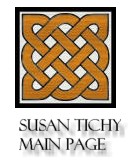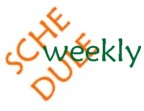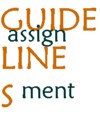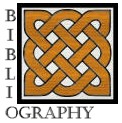ENG
LISH
660:
002
Modernist Women Poets:
Mina Loy, Marianne Moore, Lorine Niedecker
Marianne
RGE
MAS
ON
UNI
VER
SITY
week 2: Feb 3: Visual, Verbal, Valorous: An Introduction to Everything
One of the keys to Marianne Moore's work is its synthesis of verbal and visual structure, verbal and visual perception. Like the cubist painters, she pulled form and content apart, but only slightly apart. The poems are still clearly "about something" -- urgently so -- and yet their forms are abstracting, distracting. Why does she do that? may be your first question on reading her. Many of her poems require us to simultaneously see a spatial structure and hear a speaking voice. To do this, we first have to look and listen. Then we start sorting out the layers: what is the syntax? what is the rhythm when we read it aloud? what's it about? are the things that sound like jokes really jokes? what visual art codes is she borrowing? how is the stanza made? where's the rhyme? what do the line breaks do?
Believe it or not, in the course of discussing Moore's formal relations with contemporary painters, Linda Leavell's chapter (our first outside reinforcement) addresses all these matters and a few more besides. I suggest you start off with the poems (of course!) and read them aloud to find their rhythms and spokenness. Then read Leavell's chapter, and plan on reading it twice before we meet. In discussion we'll spend a little time on Leavell's remarkably thorough and compact summary of modern art. Other than that, however, though we will use Leavell's analyses we will focus on poems. We'll shift our focus from layer to layer through the poems: syntax, relation to the visual arts, and the famous rhymed, syllabic stanzas of her early poems. We'll save the evolution of her forms through free verse, prose, and back to the stanza (all touched on by Leavell) for later weeks. Some of the poems we read this week -- and many of the discussion points -- will come up later and carry us on.
Note that in Leavell, and in my on-line notes, some poems are discussed in different versions than your book presents. Please compare versions of poems and of individual stanzas.
REQUIRED READING:
Poems of Marianne Moore:
Please also read both Moore's notes (beginning on page 375) and the editor's notes (beginning on page 399).
Early Poems 1907-1913: Reprobate Silver 43, Flints Not Flowers 49, It Makes No Difference to Balbus 58, Man's Feet Are a Sensational Device 65, We All Know It 74
Little Magazines 1915-1919: To Military Progress 81, Injudicious Gardening 89, To a Steam Roller 92, To Statecraft Embalmed 93, To a Chameleon 102, Pedantic Literalist 105, Critics and Connoisseurs 106, In These Days of Hard Trying Nonchalance Is Good 108, Those Various Scalpels 116, Sojourn in the Whale 119, Roses Only 120, The Monkeys 121, Melanchthon 122, Reinforcements 126, The Fish 127, Old Tiger 132, Radical 134, In the Days of Prismatic Color 136, Picking and Choosing 138
The Dial Years 1920-1925: England 141, When I Buy Pictures 144, A Grave 145, New York 146, The Labors of Hercules 147, Snakes Mongooses Snake-charmers 148, People's Surroundings 149, Novices 152, Bowls 154
Reading Packet from the book store:
Linda Leavell. “Surfaces and Spatial Form.”
On Line Reading:
Instructor’s Notes: Notes on Texts & Quotes from Moore's Complete Prose
Moore page at the Modern American Poetry site http://www.english.uiuc.edu/maps/poets/m_r/moore/moore.htm
Reading at the JC Reserve Desk:
Marianne Moore: “The Accented Syllable.” In her Complete Prose p 31.
In case you want to
consolidate trips to the reserve desk, all required readings from
Moore's Complete Prose (for
weeks 3-5) are listed at the bottom of this page.
<>RECOMMENDED READING:
Reading at the JC Reserve Desk:
Linda Leavell. “Sojourn in the Whale.” In Marianne Moore and the Visual Arts.
An excellent
biographical sketch with emphasis on Moore’s relationships with visual
artists, other poets, and the New York avant-garde. If you don’t have
time to read it this week, try to get to it later.
Steven Watson. “Art I: Explosion in the Armory,” and photos on pp 114, 115, plus parodies pp 171. All in his Strange Bedfellows: The First American Avant-Garde.
In 1915: The Cultural Moment:
Review
“The Armory Show and Its Aftermath.”
Readings (for weeks 3-5) from Moore's Complete Prose:
“The Accented Syllable,” p 31
Review
of Kora in Hell, 1921, p
56
Review of Hymen, 1923,
p 79
Untitled comment, p 182, beginning “Academic
feeling...”, 1927
Page 191, beginning “The younger American
writers...”, 1927
Untitled
comment p. 176,
beginning “It is seldom that the professed grounds…”
“Emily
Dickinson,” p. 290
“Feeling
and Precision,” p 396
on poetic form
“Durer’s
Rhinoceros...” p 203
“Henry
James as a Characteristic
American,” p 316
Poem-like
page on circus, p 220
Poem-like
paragraph “We are
told...”, p 174
Poem-like
portrait of Dame Ellen
Terry, p 208




